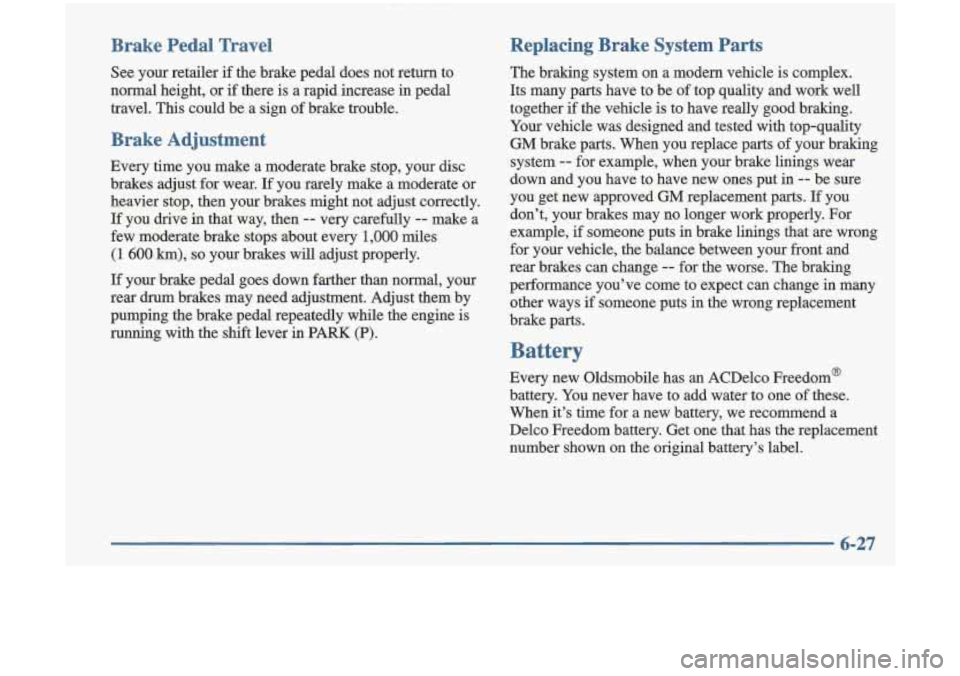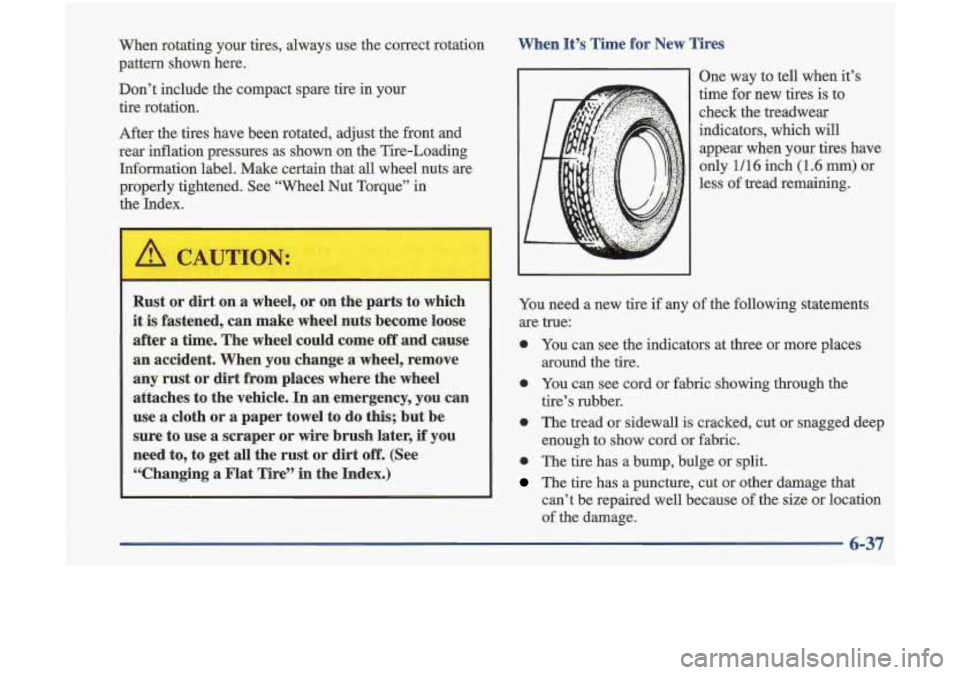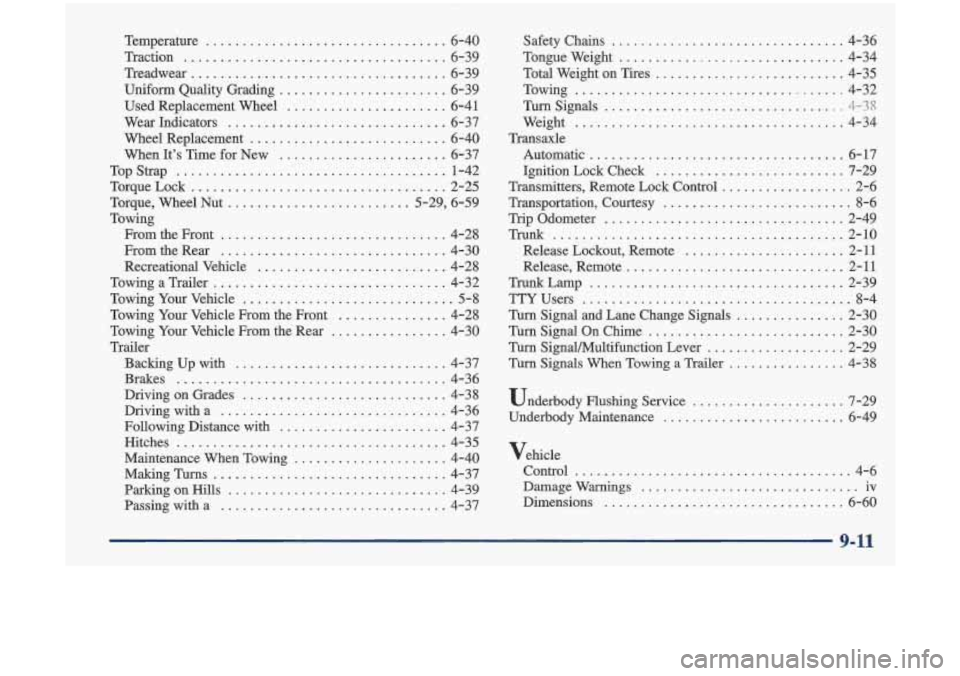change time Oldsmobile Cutlass 1998 s User Guide
[x] Cancel search | Manufacturer: OLDSMOBILE, Model Year: 1998, Model line: Cutlass, Model: Oldsmobile Cutlass 1998Pages: 348, PDF Size: 17.46 MB
Page 247 of 348

Brake Pedal navel
See your retailer if the brake pedal does not return to
normal height, or
if there is a rapid increase in pedal
travel. This could be a sign
of brake trouble.
Brake Adjustment
Every time you make a moderate brake stop, your disc
brakes adjust
for wear. If you rarely make a moderate or
heavier stop,
then your brakes might not adjust correctly.
If
you drive in thatway, then -- very carefully -- make a
few moderate brake stops about every
1,000 miles
(1 600 km), so your brakes will adjust properly.
If your brake pedal goes down farther than normal, your
rear drum brakes may need adjustment. Adjust them by
pumping the brake pedal repeatedly while the engine
is
running with the shift lever in PARK (P).
Replacing Brake System Parts
The braking system on a modern vehicle 1s complex.
Its many parts have to be of top quality and work well
together if the vehicle is to have really good braking.
Your vehicle was designed and tested with top-quality
GM brake parts. When you replace parts of your braking
system
-- for example, when your brake linings wear
down and you have to have new ones put in
-- be sure
you get new approved GM replacement parts. If you
don’t, your brakes may no longer work properly. For
example,
if someone puts in brake linings that are wrong
for your vehicle, the balance between your front and
rear brakes can change
-- for the worse. The braking
performance you’ve come to expect can change in many
other ways if someone puts in the wrong replacement
brake parts.
Battery
Every new Oldsmobile has an ACDelco Freedom@
battery.
You never have to add water to one of these.
When it’s time for a new battery, we recommend a
Delco Freedom battery. Get one that has the replacement
number shown on the original battery’s label.
6-27
Page 257 of 348

When rotating your tires, always use the correct rotation
pattern shown here.
Don’t include the compact spare tire in your
tire rotation.
After the tires have been rotated, adjust the front and
rear inflation pressures as shown on the Tire-Loading
Information label. Make certain that
all wheel nuts are
properly tightened. See “Wheel Nut Torque” in
the Index.
[ ,A c,
Rust or dirt on a wheel, or on the parts to which
it is fastened, can make wheel nuts become loose
after
a time. The wheel could come off and cause
an accident. When you change a wheel, remove
any rust or dirt from places where the wheel
attaches to the vehicle.
In an emergency, you can
use a cloth or
a paper towel to do this; but be
sure to use
a scraper or wire brush later, if you
need to, to get all the
rust or dirt off. (See
“Changing a Flat Tire” in the Index.) When It’s Time
for New Tires
One way to tell when it’s
time for new tires is to
check the treadwear
indicators, which will appear when your tires have
only 1/16 inch (1 -6 mm) or
less of tread remaining.
You need a new tire
if any of the following statements
are true:
0 You can see the indicators at three or more places
around the tire.
0 You can see cord or fabric showing through the
tire’s rubber.
0 The tread or sidewall is cracked, cut or snagged deep
enough to show cord or fabric.
0 The tire has a bump, bulge or split.
The tire has a puncture, cut or other damage that
can’t be repaired well because
of the size or location
of the damage.
6-37
I
Page 341 of 348

Temperature ................................. 6-40
Traction
.................................... 6-39
Treadwear
................................... 6-39
Uniform Quality Grading
....................... 6-39
Used Replacement Wheel
...................... 6-41
Wear Indicators
.............................. 6-37
Wheel Replacement
........................... 6-40
When It’s Time
for New ....................... 6-37
TopStrap
..................................... 1-42
Torque. Wheel Nut
......................... 5.29. 6.59
Towing FromtheFront
............................... 4-28
From the Rear
............................... 4-30
Recreational Vehicle
.......................... 4-28
TowingaTrailer
................................ 4-32
Towing Your Vehicle
............................. 5-8
Towing Your Vehicle From the Front
............... 4-28
Towing Your Vehicle From the Rear
................ 4-30
Trailer
Backing Up with
............................. 4-37
Brakes
..................................... 4-36
DrivingonGrades
............................ 4-38
Drivingwitha
............................... 4-36
Following Distance with
....................... 4-37
Hitches
..................................... 4-35
Maintenance When Towing
..................... 4-40
Making TWS
................................ 4-37
ParkingonHills
.............................. 4-39
Passingwitha
............................... 4-37
TorqueLock
................................... 2-25
Safety Chains
................................ 4-36
Tongueweight
............................... 4-34
Total Weight on Tires
.......................... 4-35
Towing
..................................... 4-32
Turn Signals
................................. 4-38
Weight ..................................... 4-34
Automatic
................................... 6-17
Ignition Lock Check
.......................... 7-29
Transmitters. Remote Lock Control
.................. 2-6
Transportation. Courtesy
.......................... 8-6
Trip Odometer
................................. 2-49
Trunk
........................................ 2-10
Release Lockout. Remote
...................... 2-11
Release. Remote
.............................. 2-11
TrUnkLamp
................................... 2-39
TTYUsers
..................................... 8-4
Turn Signal and Lane Change Signals ............... 2-30
Turn Signal On Chime
........................... 2-30
Turn Signal/Multifunction Lever
................... 2-29
Turn Signals When Towing a Trailer
................ 4-38
Underbody Flushing Service
..................... 7-29
Transaxle
Underbody Maintenance
......................... 6-49
Vehicle Control
...................................... 4-6
Damage Warnings
.............................. iv
Dimensions
................................. 6-60
9-11